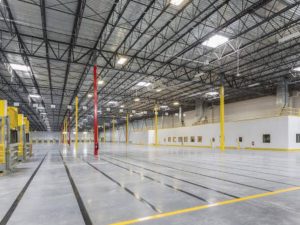The Evolution of Refrigeration in Cold Storage
Introduction
Cold storage has long been a vital component of the food industry, ensuring perishable goods remain fresh and safe for consumption. Over the years, advancements in refrigeration technology have revolutionized cold storage practices, improving efficiency, sustainability, and food preservation capabilities. In this article, we’ll explore the latest trends in refrigeration for cold storage facilities, highlighting innovations that are shaping the future of food preservation.
Energy Efficiency and Sustainability
One of the primary trends in refrigeration for cold storage is the focus on energy efficiency and sustainability. With growing concerns about environmental impact and rising energy costs, cold storage operators are increasingly adopting eco-friendly refrigeration systems.

1. Natural Refrigerants
One notable trend is the shift towards natural refrigerants such as ammonia, CO2, and hydrocarbons. These refrigerants have a lower environmental impact compared to traditional synthetic refrigerants like HCFCs and HFCs. Ammonia, for example, has zero ozone depletion potential and negligible global warming potential, making it an attractive option for cold storage facilities looking to reduce their carbon footprint.
2. Energy-Efficient Technologies
Advancements in refrigeration technology have led to the development of more energy-efficient systems. Variable speed compressors, evaporative condensers, and thermal storage systems are just a few examples of technologies that can significantly reduce energy consumption in cold storage facilities. By optimizing equipment and implementing energy-saving practices, operators can lower operating costs while minimizing their environmental impact.
Smart Monitoring and Control Systems
Another significant trend in refrigeration for cold storage is the integration of smart monitoring and control systems. These systems leverage sensors, IoT (Internet of Things) technology, and data analytics to optimize refrigeration performance and ensure food safety.
1. Real-Time Monitoring
Real-time monitoring systems continuously collect data on temperature, humidity, and other critical parameters within the cold storage environment. By providing instant alerts and notifications, these systems enable operators to quickly respond to any deviations from optimal conditions, helping to prevent food spoilage and maintain product quality.
2. Predictive Maintenance
Predictive maintenance algorithms analyze data from refrigeration equipment to detect potential issues before they lead to equipment failure. By identifying maintenance needs in advance, operators can schedule repairs during off-peak hours, minimizing downtime and reducing the risk of costly breakdowns. This proactive approach to maintenance can also extend the lifespan of refrigeration equipment, further enhancing operational efficiency.
Integration of Renewable Energy Sources
As the demand for sustainable cold storage solutions continues to rise, many facilities are exploring the integration of renewable energy sources to power their refrigeration systems.
1. Solar Power
Solar power is increasingly being used to supplement traditional grid electricity in cold storage facilities. Solar panels installed on rooftops or adjacent land can generate clean, renewable energy to offset power consumption from the grid, helping to reduce operating costs and carbon emissions.
2. Waste Heat Recovery
Waste heat recovery systems capture heat generated by refrigeration equipment and repurpose it for heating or other applications within the facility. By harnessing this otherwise wasted energy, cold storage operators can improve overall energy efficiency and reduce their reliance on conventional heating sources.

Conclusion
In conclusion, refrigeration trends in cold storage are evolving rapidly, driven by the need for energy efficiency, sustainability, and food safety. From the adoption of natural refrigerants to the integration of smart monitoring systems and renewable energy sources, cold storage facilities are embracing innovative solutions to meet the demands of a changing industry landscape. By staying abreast of these trends and implementing best practices, operators can optimize their cold storage operations while reducing environmental impact and ensuring the freshness and safety of the products they store.

Recent Comments